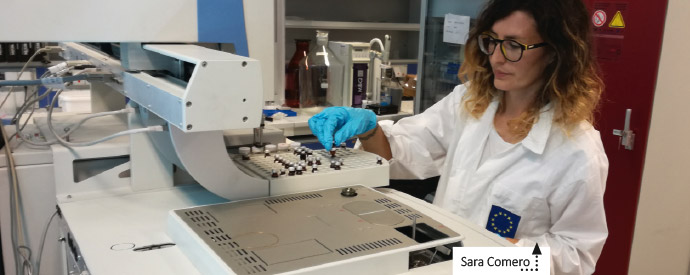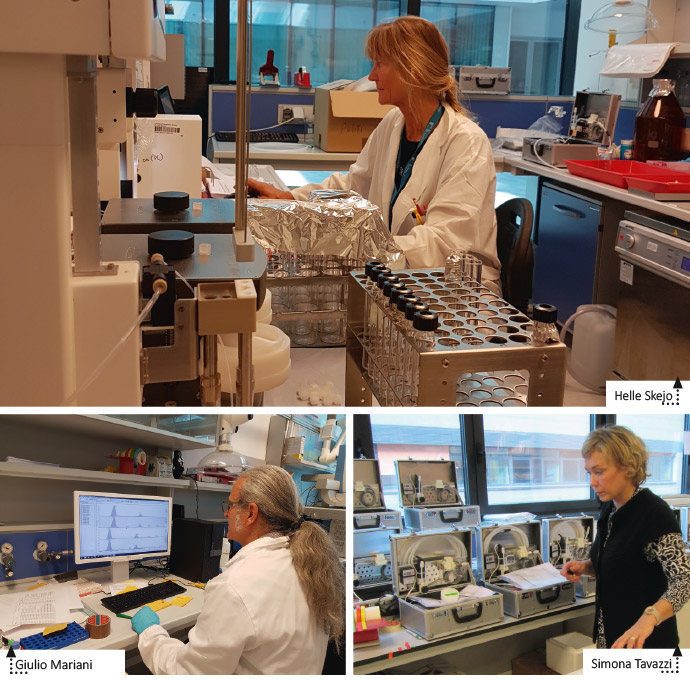Danube Watch 1/2020 - More Efficient Sampling with the Mariani Box
More Efficient Sampling with the Mariani Box
Technical analytical chemist, Giulio Mariani, explains the development and use of his “Mariani Box” to make water analysis more cost-effective and streamlined.

So, a few years ago in our team, we asked ourselves a question: "How can the analytical costs of water analysis be lowered"?
To answer this question, I started the development of an “on-site water sampling device”, afterwards called the “Mariani Box”. This device can sample a wide range of water volumes (0.5-20 litres), simply by using a portable pump, while concentrating hundreds of organic chemicals with different characteristics on a single adsorbent filter. The device is a viable economic alternative for water sample collection and it is fully portable in the field, making its use easy and straightforward.
Combining the use of the Mariani Box and the development of analytical multi-residual methods allowed for the analysis of a variety of organic compounds in a single sample, reducing the number of duplicate samples and analyses, thus limiting the monitoring costs.
The use of the Mariani Box also streamlined the logistics of sample collection. It makes it possible to store samples “on” a filter, which itself can be easily and safely stored and can be shipped at lower prices (since it is smaller and lighter) compared to the traditional glass bottles.
This sampling device has already been used successfully in many projects.
In the context of the Fourth Joint Danube Survey (JDS-4), the JRC was asked by the ICPDR to analyse water samples for 54 contaminants selected from those listed on the EU-Watch list, from the list of Danube River Specific Pollutants (DRSPs), from the list of priority substances from the Directive 2013/39/EU and from the flame retardants already detected in the previously JDS-3. In addition, the agreement foresaw the use of the Mariani Box for all water collection. The sampling included the collection of 51 river surface waters from the source of the Danube to the delta, 11 effluents of wastewater treatment plants and 7 groundwater samples collected in different countries along the river basin.
In order to support the sampling campaign and the analytical tasks, the JRC’s D.2 laboratory hosted 5 Visiting Scientists (VSs), selected by the ICPDR. The VSs were trained by myself on the use of Mariani Box with the scope of illustrating the operation of the device, including the flux calibration, the pre-treatment of filters, the collection of water samples, the cleaning methodology as well as filter extractions.
The training session represented an occasion for scientific exchanges on the quality criteria to be applied during the sampling campaign. The ICDPR decided to divide the Danube stretch in three portions. The trained VSs were allocated to three sampling teams to collect samples from the North, the middle and the South stretch of the Danube River. The sampling campaign and the collaboration with the Visiting Scientists was successful and we provided the ICPDR with the expected analytical results.







